The PULSE The PULSE

D4Ds begin in December. Learn why we do them and how to prepare now!




D4Ds begin in December. Learn why we do them and how to prepare now!



PTSMC’s fall management meeting is the biggest leadershipmeetingoftheyear.October23 -24 the vast majority of PTSMC’s partners, directors and senior management spent a day and a half at MoheganSun! rd th
The full day on the 23 featured a jam-packed agenda. Coming out of the gates the team was divided into four smaller groups, that rotated throughroundtablesof“HotTopics”fordiscuss rd
Melissa Boutagy, PTSMC’s Clinical Compliance Officer & Guilford PT, lead the Compliance and Risk Reduction session. As we grow it is imperative to be working to remain compliant with documentation andbillingpractices.
CredentialingRuleswerecoveredbyJennDetlefsen, Director of Billing. We reviewed our policies and procedures related to documentation and credentialing and adopted changes based on Jenn’s recommendations.
StevieFell,OperationsCoordinatorand“theWizard” of PROMPT, helped us better utilize the capabilities of PROMPT We constantly learning how to leverage andmaximizeitspotential.
Mallory Mason, Director of Culture & Engagement, provided analysis and feedback on the Employe Value Perception Study We gained insight into wha our people value in employee benefits and will us thislearningwiththegoalofimprovingours.
Senior Director of Operations, Kristen Forster spok to three topics: success of the Prompt Kiosk, updat onthecollectionofdeductibleandcoinsurancepilo and discussed the concept of a call center fo PTSMC.
We reviewed the Recruitment Project Update wit John Demitrus, our Director of Marketing The dat and implications of geo fencing and targetin campaigns designed to recruit more people to join PTSMCwasfascinating.
Juliann Chacko, Director of the Student Program and Assistant Director in Orange, showcased the workinprogressofClinicalPathways Theworksheis leading to create a road map for new clinical hires to be successful is going to be a great tool for growth anddevelopment.
The Clinical Excellence Update and revisions to the DOCS program were spearheaded by DanielleDunn, Director of Clinical Excellence & PTSMC Orthopaedic Residency Program and Wallingford PT. Danielle and her team have made recommendations to improve thequalityandeffectivenessofbothprograms
After a lunch break, a DEI training session was provided to leadership by Marilex Harwood, DEI Lead & Administrative Coordinator. The team exploredtheuseoftheREACTmodel
We also covered Marketing Content, Prediction Health, Sidekick, SR Fax vs. Kno2, and cash based TDNtoroundouttheafternoon.
In the evening, we mixed in some fun at the Bowling Lanes I can say with great confidence that no one in the PBA (Professional Bowlers Association) is at risk of losing their place on the tour! On the other hand, the uniforms were professional grade. It was a lot of fun and re-energized the crowd We closed the long andproductivedaywithalatedinneratBalloItalian




In the morning, we honored the 25 years spirit day, all sporting our “25 Years Strong” t-shirts! After breakfast, we began day two by breaking into two groups and attended two concurrent sessions. In one of the sessions,MarilexHarwoodwasbackinaction,thistime joined by Chris Chimento, PTSMC’s Clinical Talent Recruitment Leader, to educated us on ways to be moreinvolvedinbuildingthePTSMCLinkedInNetwork
The concurrent session focused on clarifying questions and discussion about the pre-read documents all PartnersandDirectorreceivepriortotheweekend
Time was spent on an array of topics including but not limited to meeting cadence, student hiring, salaries, holidaygifts,andincentiveprograms
We ended the second day at noon to “get back to the realworld”
As I review the above summary, we covered a lot of importantgroundinaverypacked16orsohours.
The summary lacks a few key elements... this team gets together as a full group only three times per year and this one is special. The amount of concentrated time we get to spend together renews and reinforces the personal relationships that have formed through the years
The meeting always reminds me of how fortunate PTSMC is to have such an engaged and committed group of leaders who care deeply about their people, ourpeople,andthisorganization
Thanksforallyoudo
n n o u n c e m e n t s



A Little! Do you have a co-worker that goes above and beyond?

Recognize your coworker in a“BRAG”!
A BRAG is a chance to highlight a colleague who goes above and beyond for patients and staff. Share a moment where they exceeded expectations or made a positive impact. You can choose to be named or anonymous. Recognitions will appear in the December PULSE.
ClickHEREtosubmitbyNovember19.
Note, supervisors cannot brag about employees they supervise.
401(k) Updates BI-ANNUAL SAFE HARBOR EMPLOYER CONTRIBUTIONS
On November 17, PTSMC will make Safe Harbor Contributions to employee 401(k) accounts.
The contribution reflects 3% of eligible earnings between January 2025- June 2025.
Employees who were active in the 401(k) plan between January and June will receive this contribution.
If you have any questions reach out via email or phone to Mallory Mason.
Employee Spotlight pg 6
Andrew Varcoe, Orange PSC
Main Feature pg 7-8
D4D...
Highlights & Happenings pg 9-17
CIA Report pg 18
Tips & Tricks for Writing an Effective Progress Note
Email MalloryMason with any questions. DEI MONTHLY FORUM GRATITUDE

‘Tis the season for Annual Holiday Drives Pick any dates through the end of the yea a food, coat, toy, sock, you make it d support a group local to your clinic Click to submit your clinic’s drive details.

Lifebeat pg 19
Having Gratitude in the Workplace
Clinicians Corner pg 20-21
Practical Running Analysis for the Clinic

Monthly


Flannel Day Tuesday, November 25









Not Pictured New Employees
Seth Cherwin, Norwich PT Aide
Daniel Driscoll, Westbrook PT Aide
Hope Hagen, Waterbury PT Aide
Hedy Hartley, Glastonbury PSC
Joshua McMinn, Windsor PT Aide
Ashlynn Witt, New Haven PT Aide


Allison Ewelllindley Workers Comp.



Years
Vladimir Smolgovskiy PT
Michael Smarrelli
Chris Petrosino
Abigail Koonankeil
Leah Best



Jane Silva
Lexi Shafman
Wilberto Lopez
Kyla Weiss
Camille Cortes
Evelyn Villarreal Laclede
Robert Saraidarian


Welcome to our newest PTSMC teams! The acquisition of Churchill Physical Therapy, in Newtown, and Monroe Physical Therapy & Sports Rehabilitation is official, and we welcome the amazing staff to PTSMC! Since 2003, both clinics have outstanding clinical reputations, under the ownership and leadership of Ray Weitekamp MS, PT, OCS and Tom DiNicola PTA, BS. Both locations open their doors as PTSMC to patients November 4, 2025.

Congratulationsto CaseyDeLuciaonherpromotionto Patient ServicesAdministrator!CaseyjoinedPTSMCinAugust2018asaPT AideandhasconsistentlyexemplifiedourPTforLifeculturethrough heroutstandingcustomerserviceanddedicationtotheBranford team.In2021,herhardworkandcommitmentearnedhera transitiontoPart-TimePatientServicesCoordinator.Now,in2025, BranfordisthrilledtocelebrateherpromotiontoFull-TimePatient ServicesAdministrator!
BranfordPartner,TedRaczka,shares,“Sincejoiningourteamover fiveandahalfyearsagoasapart-timeaide,Caseyhasbeena consistentpillarofsupportandpositivityintheclinic.Herdedication, compassion,andstrongworkethichavehelpedusprovidethe highestlevelofcareforourpatientsandhavemadealastingimpact onourteam.Congratulations,Casey,onthiswell-deserved achievement!Weareallsoproudofyourgrowthandexcitedtosee allthatyou’llcontinuetoaccomplish—we’reluckytohaveyou!
Outsideofwork,Caseyenjoyseveningwalkswithherhusbandanddaughter—andshe’sexcitedtosharethat sheandherhusbandareexpectingtheirsecondchildinMay2026!
Withthispromotion,CaseylooksforwardtotakinghersupportoftheBranfordclinic,Ted,andtheteamtothe nextlevel.Shetakesgreatprideinensuringthatpatientsfeelwelcomeandthattheclinicrunssmoothlyeach day.We’resoexcitedtoseeCaseycontinuetogrowandthriveinthisnextchapterwithPTSMC!

Patient Services Coordinator Andrew Varcoe joined the Orange team in 2022. His ties to the Orange community go way back; he is a native of the town, he grew up attending school, participating in community and church groups and making friends along the way One of those friendships even led to his now wife, Starr, who he’s known since elementary school! Andrew had also become more engrained in the Orange community from his time working at popular hot spots such as Jamba Juice, Bruegger’s Bagels, and Trader Joes. These roles introduced him to the world of customer service, and he met quite a few “regulars” over the years While Andrew no longer resides in Orange, some of his community connections have come full circle- he and patients will recognize each! Makes for a fun ice breaker, and a great “PT For Life” moment.

When Andrew joined PTSMC, he was ready to step into a more administrative role that combine his skills with his interest in fitness and physical therapy. Then, working in the healthcare environment was relatively new to Andrew He loved learning form the Orange and Operations teams, remembering how supportive with troubleshooting and streamlining processes they were. He enjoys the pace of the clinic, and that no two days are the same in the PSC role!

Over the last five years, Andrew and Starr have moved to West Haven and started a family. Three years ago, they added chihuahua, Ziggy, who is now a proud big brother to two human siblings! Goldie turned two in October (Happy Birthday Goldie!) and August, was born in August! Their summer and fall were spent at home getting used to life as a family of four. They were able to enjoy a few “staycations” spending time at their pool and enjoying walk in their neighborhood and at Woodmont Beach. Andrew took advantage of his time at home this summer by expanding his gardening skills. He grew lots of tomatoes, raspberries and even grew his own asparagus.
Andrew has always loved music, movies, and shows “The Office” is one of his all-time favorite shows. He plays the guitar and always dedicates some time to keep playing. He’s really looking forward to seeing Dave Matthews Band with his friends at Madison Square Garden this month!


Andrew has 2 middle names!




D i a l o g u e f o


"Without continual growth and progress, such words as improvement, achievement, and success have no meaning." – Benjamin Franklin
"Without continual growth and progress, such words as improvement, achievement, and success have no meaning." – Benjamin Franklin
DialogueforDevelopment:aPTSMCtermforaformalmeetingthatisatwo partprocessto“dialogue”aboutpastperformanceandfutureperformance. Thenameindicates,ourprocessisinfact,adialogue.Itisaconversation focusedonemployeepersonalandprofessionaldevelopmentinthe workplace.
Itisanopportunityforanemployeetoself-reflectandacommitmentby PTSMCleaderstoprovidefeedbacktorevealanemployeesstrengths,areas fordevelopmentandprovidemotivation.
Thelookbackprocessincludescompletingaperformance feedbacksheet, reviewingannualgoalsandobjectivesandcontributionstotheclinicor departmentdevelopment.
Thelookforwardisadialogueabout1-3-5yearplansfortheemployeeandtheplansfortheclinicor departmentintheyearsahead.Fromthisdialogue,annualgoalsandobjectivesareestablishedfor theemployee;aroadmapforpersonalandprofessionalgrowthanddevelopment.

Annually,betweenDecembertoFebruary,isD4D season!PTSMCleadershipcommitstimetomeet witheacheligibleemployeeforanhourthatis literally,allaboutthem!Manyorganizationshave onesidedperformancereviewsdeliveredto employeesbymanagement.Othersneglectthe importanceoffeedbackanddon’tdo performancereviews!TheD4Dprocessisan open,transparentcommunicationprocessthatis positiveandisfocusedonhavingemployeesbe thebestversionofthemselves.

Heading into the D4D season, embrace the opportunity to self reflect on your performance:

What are you proud of?
What are you proud of?

If you accomplished If you accomplished


Did you exceed your own expectations?
Did you exceed your own expectations?

Did you accomplish what you wanted? Did you accomplish what you wanted?


Whattypeof supportmightyou Whattypeof supportmightyou
Asyousetyourgoalsandobjectives,berealisticandfocused.Onegoalwith2-4objectivesina SMARTformatsetsaroadmapforgrowthandsuccess.
Careersandjobsrepresentalargesliceoftimeinourlives.
Embracethejourneyofcontinuouspersonalandprofessionalgrowth!

EnjoyyourDialogueforDevelopmentprocess!
Key Takeaways!
Key Takeaways!
Dialogue for Development (D4D) is a two way conversation The process blends reflection and planning
Dialogue for Development (D4D) is a two way conversation The process blends reflection and planning
D4D reinforces PTSMC’s commitment to employee growth
D4D reinforces PTSMC’s commitment to employee growth

"In the absence of feedback, people will fill in the blanks with a negative." –Pat Summit
"In the absence of feedback, people will fill in the blanks with a negative." –Pat Summit



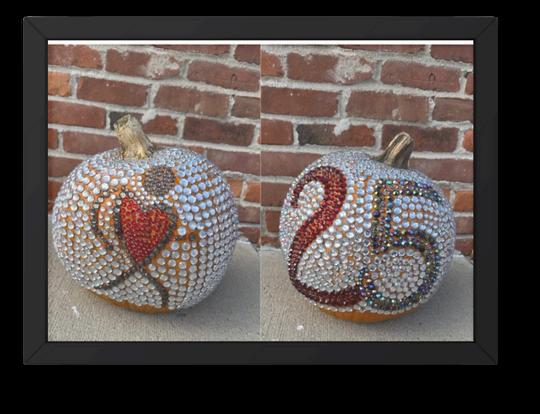



















































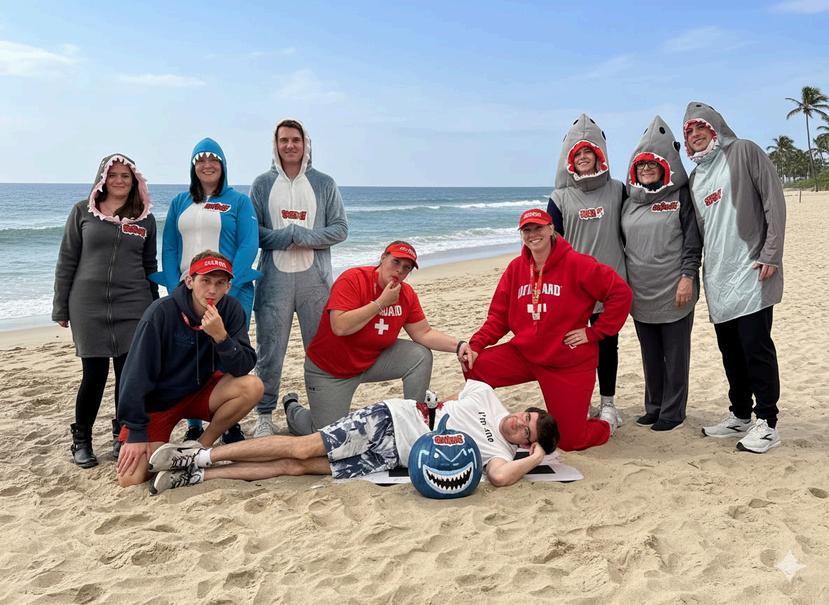














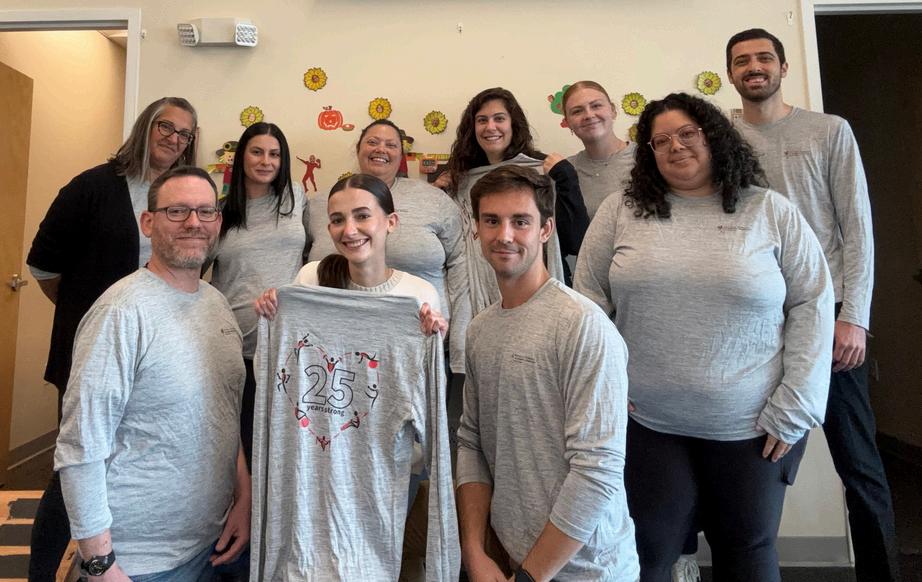







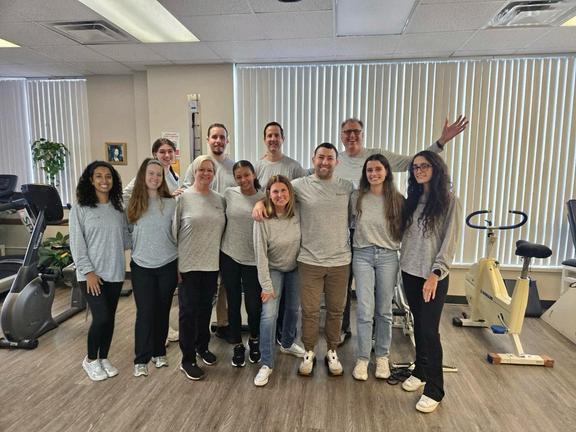









Hamden celebrated its first year in business with an open house and ribbon cutting. The PTSMC team was joined by the Hamden Regional Chamber of Commerce, patients, colleagues, and family & friends. Congrats to Partner Pat Kinsella for a successful first year!

CI’s with September Students
CI’s with September Students
Share How You’re Special!
Share How You’re Special!
PT Students are looking for experiences that showcase unique niches in terms of patient populations and treatment techniques. For example, are you working with a local high school track program? Did you just complete a course on treatment for patients with oncology? Please share your special interests with the Student Program team, Juliann Chacko and Kevin Howard, so that we can best connect you with students sharing similar interests!


11 PTSMC clinicians attend Myopain Seminars Dry Needling 3 Advanced course hosted by PTSMC at QU. This was their final course in the CMTPT certification series! Congrats!


Daniel Vala, has been busy these days! In Sept. he completed his residency community project, “Stay in the Game-How to Prevent ACL Injuries In Soccer”.
He utilized the to He educated and instructed a premier soccer team of middle school boys, at CT, on a pregame warmup based on the FIFA 11+ framework to reduce injury. As a former player and coach the team loved working with Dan.





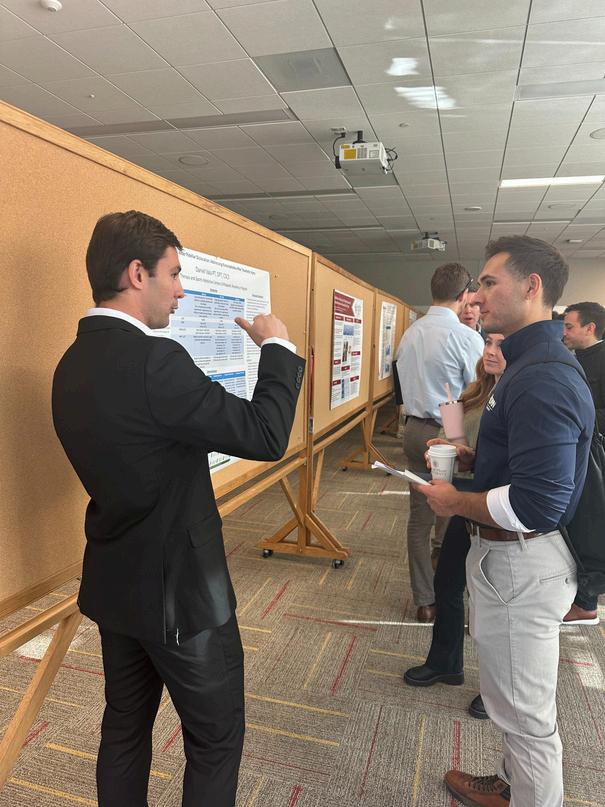
Daniel Vala, shared his poster presentation, at the annual CT APTA Conference. His presentation was “Fear and Anxiety After Patellar Dislocation: Addressing Kinesiophobia After Traumatic Injury”

Danielle Dunn presented a learning session, “Motion Meets Hormones: PT’s Vital Role in Perimenopause & Menopause Health,” education on how PTs can play a transformative role in supporting women through the perimenopausal and menopausal transition.



Katherine Fan recently published a case report in JOSPT Cases! Her work, “Differential Diagnosis of Dorsal Wrist Pain in a Recreational Tennis Player: A Case Report,” showcases her clinical expertise and commitment to advancing physical therapy research. Click here to read her publication!

Congrats to the following PT Aides who completed the Skills Introduction for PT Aides Program:

Manchester hosted spine surgeon Dr. Alex Ha, from Advanced Orthopedics New England, for a “Doc Talk” in October. The session focused on spine care, surgical techniques, and collaborative strategies to enhance patient outcomes.
Tayma Abdulkareem, West Hartford
Sean Apostalon, Essex
Tori Chorzepa, New Haven
Meera Das, Middletown
Abigail Fishbien, Southington
Amanda Funari, Glastonbury
Jonathan Levit, Naugatuck
Patricia Li, Orange
Bristol opened 2023
Hamden opened 2024
In 2000, the average cost of a turkey was $0.78 to $0.89 per pound.
The 2025 projected cost is around $2.05 per pound! C L I N I C A L E X C E L L E N C E C L I N I C A L E X C E L L E N C E

Matthew Luongo, Guilford
Emily Macedo, Guilford
Joshua McMinn, Windsor
Xhulia Mekshi, New Haven
Kiely Raucci, Shelton
Matteo Tillona, Windsor
Ashlynn Witt, New Haven

Norwich and Westbrook are raising funds for Honor
Flight Connecticut, whose mission is to honor veterans by transporting them to Washington, DC to visit and reflect at their memorials. For many veterans this trip is their first - sometimes only - opportunity to see the monuments built in their honor. They return home to a momentous celebration. Reach out to either Adam Rosenblatt or Scott Cameron to help support!


Christine Raffone got engaged on Sept. 20 to her fiancé Ray!

Admin office social
Over the summer Admin had a fun filled social with food, drinks, and connection!








Who’s got spirit?! Glastonbury celebrated their own spirit week leading up to Halloween!

Kasey Adinolfi and her son Liam at Mikey’s Place 5k in Wethersfield.



The Bristol Mum-A-Thon Road Race featured appearances from Janet Tarasuk, Matt Baronowski and his son guet Simon!


The Simsbury team was out on a beautiful day for the annual Simsbury River Run.



Progress notes are a REQUIRED part of documenting patient care and ensuring appropriateness of continued treatment. This note type should be completed every 10 visits or every 60 days, whichever occurs first.
Progress notes completed at the 10 visit are equally critical as those required for authorization. They play a key role in medically justifying the continuation of care, highlighting patient progress and the effectiveness of our interventions. th

Keep in mind: In the event of an audit, if the 10 visit progress note is not as thorough or clinically supportive as an authorization note, services may be retroactively denied. Strong documentation is essential to protect both patient th care and reimbursement.
When updating a Plan of Care (POC), complete a progress note concurrently or within a few visits. This ensures timely, objective data supports the extended plan and clearly documents the medical necessity for ongoing treatment.
Plan ahead: Review your schedule weekly and identify patients approaching their 10 visit. Send out FLRs in advance to stay on track.
Use PROMPT shortcuts to save time when making updates and ensuring consistency. Click the three vertical dots on the right of the toolbar and select “Repeat Prior Measurements” to automatically bring forward previous objective data OR “Repeat measures” in the Objective box
Summarize progress since the last reporting period.
Include both improvements and continued limitations in functional activities. Clearly document how these changes impact the patient’s goals and ongoing PT needs.
Want to learn about getting the most out of Sidekick?
Join our virtual meeting, November 7 at 12:00 PM th
Small steps, big impact—boost your workflow, stay compliant, and deliver quality documentation that supports better patient outcomes.








Questions

Gratitudegoesbeyondrecognition–it'sabout creatinggenuinehumanconnections.It reinforcesasenseofbelonging,value,and sharedpurpose.Expressinggratitudebrings humanityintotheworkplace,recognizingnot onlywhatsomeonehasaccomplishedbut alsowhotheyareandtheroletheycontribute totheteam.Indoingso,itstrengthens alignment,partnership,anddignity–the intersectionofstrategyandpsychology.
Researchconfirmsthatbeingrecognized drivesmeasurableoutcomes.Astudy conductedbytheJohnTempleton Foundationfoundthat70%ofemployees wouldfeelbetteraboutthemselvesiftheir bosswasmoregrateful,andaccordingtoa Glassdoorsurvey,81%ofemployeessay they'dworkharderforagratefulboss.
Neuroscienceoffersdeeperinsightintohow recognitionshapesbehavior.Whensomeone receivessincereappreciation,theirbrain releasesdopamine–theneurotransmitter linkedtorewardandmotivation.This responsedoesn’tjustcreateapleasant feeling;itreinforcesthedesiretorepeatthe behaviorsthatpromptedit.
Thisdopamine-drivencycleisknownas behavioralreinforcement.Eachtimean employeeisacknowledgedinaspecificand timelyway,theirbrainessentiallyregisters, “dothatagain.”Overtime,recognition becomespartofaperson’sself-concept—not outofaneedforpraise,butbecauseitaffirms theirvalueandsignificance.
Trainyourbraintonaturallyrecognizeand reinforcepositivebehaviorsinothers. Theoutcome?Recognitionbecomes instinctive,yourteamfeelsvalued,andyour mindlearnstoseethebestinpeople.
Share appreciation promptly “Thank you for supporting XXX during their exercises today – your attentiveness really made a difference.”
Recognize Publicly
Nametheperson, theireffortand itseffect. “XXXwelcomedevery patientwithwarmthduringa busyday, stayingcalmand positivec–anditliftedthewhole linic’senergy.”
Show appreciation both in person and online – our biannual BRAGS in the PULSE is a great way to recognize your colleagues! Check out the Announcements page for details.

Build Gratitude→ Feedback

Askreflectivequestionslike “Whohelpedyousucceedthis week?”tomakeappreciation partofdailydialogue.


Running analysis doesn’t need a motion-capture lab to be clinically useful with a simple, repeatable 2-D video setup, you can reliably detect gait events and several meaningful kinematic patterns. This process was inspired by an online running course from The Science PT (Running Injuries Course), which dives into running biomechanics and step-by-step analysis in even greater detail Combining that framework with the reliability work of Pipkin et al and other evidence-based approaches provides a strong foundation for clinically relevant running assessments


Equipment (Keep it Simple, but Precise):
High-speed camera (≥120 frames/sec) mounted on a tripod. In Pipkin’s study, a 120-fps camera provided excellent reliability for gait-event detection. iPhone/iPad slow motion video are adequate.
Tripod(s) and fixed camera heights: set up frontal, sagittal, and close-up frontal (feet) views. Label these for consistent replication between sessions.
Treadmill with a stiff deck: this is key a stiff-deck treadmill better mimics overground mechanics, while softer, cushioned decks dampen impact and distort lower-limb loading patterns
Video-editing or analysis software to trim 5–10 second clips and a standardized scoring sheet Pipkin used a 15-item qualitative sheet; Souza’s 2-D framework is also adaptable for clinic use This is highly recommended but not required

1.Prep the runner: have them wear shorts, a fitted top (to visualize landmarks), and their typical running shoes. Record injury history, pace, and preferred surface. The runner should warm up for 3-6 minutes at self-selected speed prior to recording.
2.Camera setup: sagittal plane camera at mid-pelvis height, frontal plane camera centered on the runner. Keep all cameras perpendicular to the plane of motion.
3 Recording: capture at a consistent, self-selected pace Collect several strides and extract three usable 5second clips If using an iPhone, you can record 10 second clips in slow motion
4 Identify gait events: initial contact, midstance, and midflight frame-by-frame Pipkin et al reported strong intrarater reliability (ICCs 0.77–1.00) for gaitevent detection.
5.Score systematically: use a repeatable checklist and focus on three primary mechanical flaws overstriding, bounce, and excessive compliance.
The 3 Key Flaws to Screen
1. Overstriding (Sagittal Plane)
Overstriding increases braking forces and loading rate.
Evaluate:
Foot inclination angle at initial contact (degree of dorsiflexion or heel-first strike)
Heel-to-center of mass (COM) distance (how far ahead of the pelvis the foot lands)
Knee flexion angle at initial contact
Tibial angle relative to vertical
2. Bounce (Vertical Excursion, Sagittal Plane)
Tip: Place greater emphasis on knee flexion angle and tibial angle — they’re more reliable and less affected by parallax or out-of-plane motion.
Excessive vertical oscillation can indicate an inefficient pattern Too little bounce may indicate poor load tolerance from the knee in a post-op limb. Look for:
Center of mass vertical displacement, estimated via pelvis or waistband motion from midstance to midflight.
Minimal bounce generally indicates better efficiency and load management.
3. Excessive Compliance (Frontal Plane)
Represents poor frontal-plane control, often linked to hip and trunk weakness. Examine:
Joint center alignment (hip–knee–ankle stacking)
Lateral pelvic tilt (pelvic drop during stance)
Knee separation (crossing or adduction pattern)
Foot-to-COM placement (whether the foot lands excessively lateral or medial to pelvis)
What to Trust (Based on Reliability):
Highly reliable measures: foot-strike pattern, tibial inclination, knee flexion at initial contact, trunk lean, and event timing.
Use cautiously: ankle dorsiflexion at midstance, COM vertical excursion, and foot-to-COM placement, which are more sensitive to camera position and image resolution.
Interpretation & Limitations:
A 2-D video setup paired with the “big three” flaw framework allows for efficient, reproducible running assessment in the clinic Be mindful of potential errors: out-of-plane motion, soft treadmills, and inconsistent camera angles which can all affect results The Pipkin et al and Souza et al articles referenced for this article provide further visual references for running gait assessment For detailed joint kinematics or multiplanar mechanics, a 3-D motion lab remains the gold standard.




Co-Editor
Marilex Harwood DEI Lead Administrative Coordinator
Contributor
Meghan Blanusa Clinical Excellence Coordinator


Contributor
Juliann Chacko Orange Assistant Director & Director of Student Program
Contributor
Kristen Forster Senior Director of Operations

Contributor

Co-Editor
Mallory
Director


Contributor
Sandra Boccialetti Director of Human Resources
Contributor
Emily Fillion Senior Marketing Coordinator
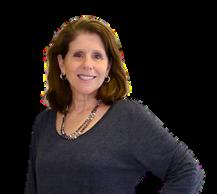
Contributor
Sandy

Caty Mulligan HR Coordinator & Sports Medicine Coordinator

Contributor
Bri Rivera Administrative Assistant

